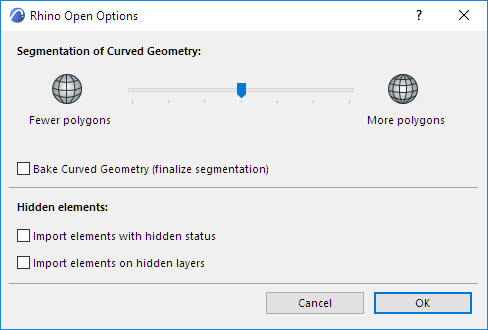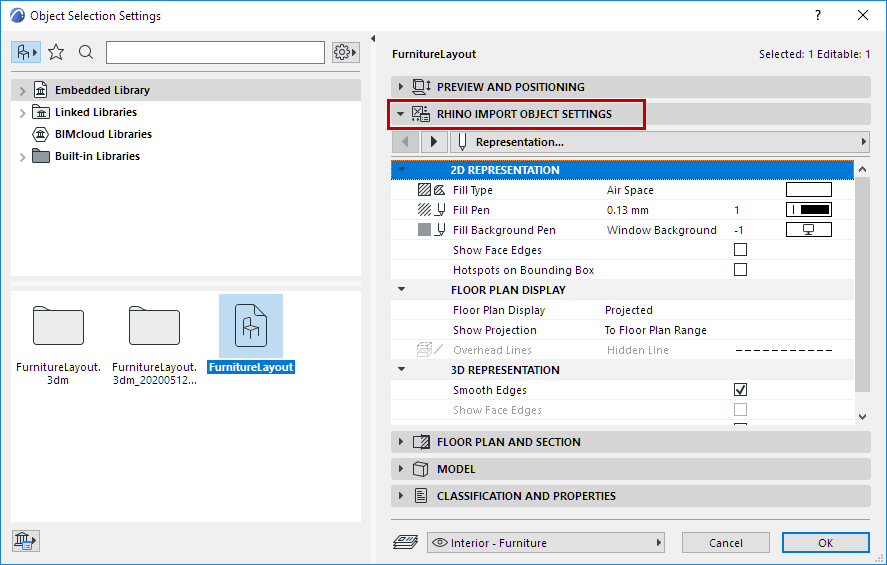
Import Rhino 3DM File as Object
1.Use this command to import a Rhino file as a single object in ARCHICAD:
File > Libraries and Objects > Import Rhino 3DM file as Object
2.Click Options for Rhino Open Options:

3.Set your preferences for Segmentation and Hidden elements:

•Segmentation of Curved Geometry
Use the slider to adjust the segmentation of curved surfaces imported from Rhino.
Notes:
–The segmentation slider affects curved geometry only, not planar elements
–If you increase segmentation (resulting in a higher number of polygons for smoother surfaces), remember that a high polygon count affects both file size and performance
•Baked Curved Geometry
–Optionally, check the Bake Curved Geometry box to finalize segmentation before import. As a result:
-You will not be able to further adjust segmentation once the model is imported to ARCHICAD
-On the other hand, element snapping will be available
-In general, navigation is faster in models if this option is checked
•Hidden Elements
Use these controls to define how to interpret Rhino’s “hidden” elements.
In Rhino (unlike in ARCHICAD), it is possible to hide an individual element, whether its Layer is visible or not. By default, such hidden elements are NOT imported to ARCHICAD.
To import them, check the Import hidden elements box.
4.Click OK.
5.You are alerted that the import was successful:

6.Use the Object tool to place it into the project.
Rhino Object Settings in ARCHICAD
A Rhino file placed as a single object in ARCHICAD is stored in the ARCHICAD Embedded Library.
Use the Rhino Import Object Settings panel of Object Settings to set its appearance.

Note the following Rhino-specific parameters:
Segmentation
This control is available for objects imported from Rhino, provided that you did not check the Bake Curved Geometry option at import.
Use the Segmentation pop-up to adjust the smoothness of a selected curved object. Remember that a high polygon count may affect file size and performance.
2D Representation
•Show Face Edges: Show them if you want to see the internal surface edges in 2D.
•Hotspots on bounding box: Turn this on if you want to see additional hotspots on the object’s bounding box in 2D. This can be useful, for example, for dimensioning an orthogonal object such as a curtain wall.